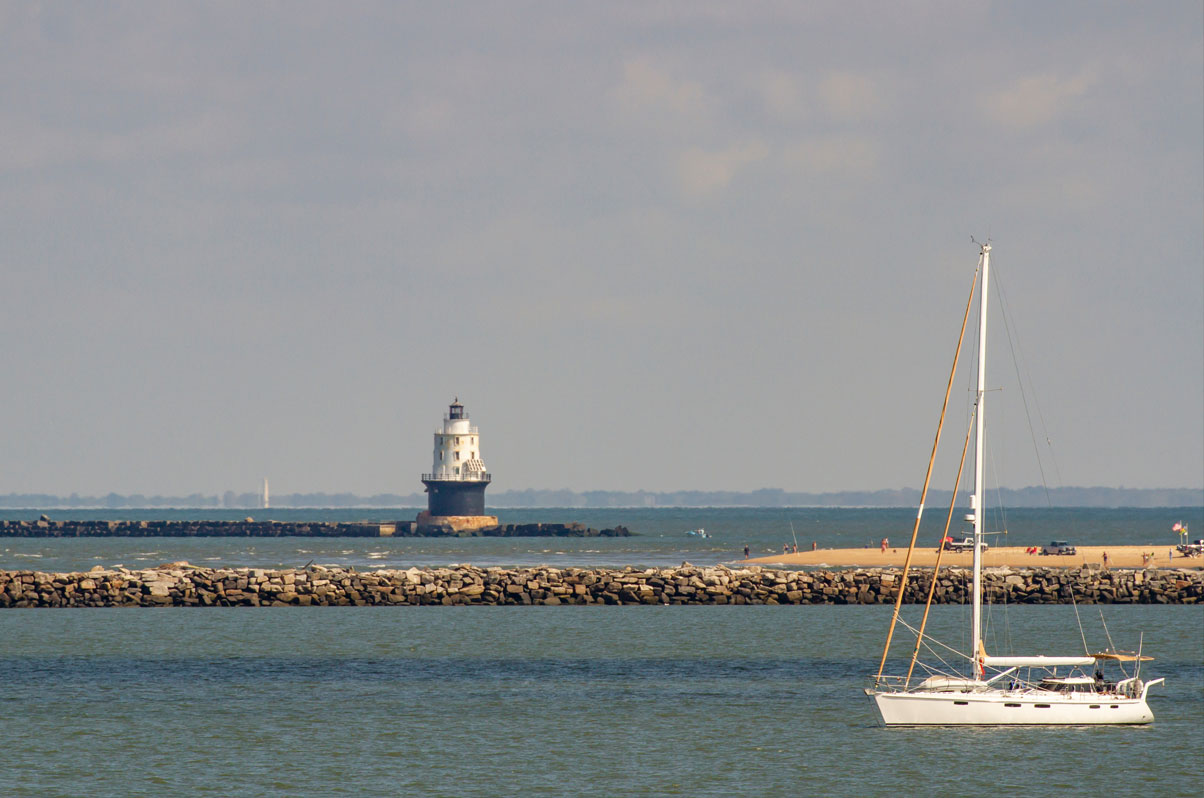
Last month I talked about the canals and locks we experienced. Now, if you are heading the same route we took, the next step is the ICW (Intracoastal Waterway.) After passing through New York City you’ll have an outside Atlantic Passage to Delaware Bay and then onto the Chesapeake Bay where you’ll begin your adventure through the ICW. The northern part of the ICW is the easier section, noting it has good depths and is well marked. It helps to ease you into the more taxing part down south.
We very much enjoyed Delaware Bay into the Chesapeake Bay down to Norfolk with our only complaints were dodging crab traps. But you’ll have lots of anchorages and good places to call home for the night.
Once you get to Norfolk you will be at mile 1 of 3,000. The first two to three days were very pretty and quite enjoyable as you will be passing through inland canals and you’ll be motoring past beautiful nature reserves and quaint small towns. However, once you get to the coast again, the real fun bits of the ICW are about to start.
I left Steph at the helm and told her to stay between the markers while I went to see that the head was still “working”. A few after I descend below deck, I hear Steph’s voice pipe up exclaiming that we’re slowing down. I jump off the pot and run upstairs to find out she wasn’t trying to prank me, we actually stopped, we ran aground in MUD. I admit I blamed her for not staying in the markers and some words were exchanged as it was quite stressful but I looked around us and then at the charts. I said you’re right, we are in the markers and at that moment my confidence in the charts and markers went out the window.
Thankfully, we threw up the head sail and we were able to work ourselves off the muddy bottom. We were now at the coastal part of the ICW where the ICW follows the coastline of The Atlantic. This sounds really cool but it’s not. The tides play a sinister effect on the bottom below. You’ll soon realize that charts are no longer accurate as the inlets from the seas outside like to move sand bars around within the ICW. Over time, you lose confidence in the accuracy of the navigational markers. We learned just how fast a boat stops from seven knots to zero, only a few hours after our first grounding. This time it was a sand bar and our running aground was much more abrupt. When the boat came to a halt, it threw Steph and I forward and a lot of stuff down below. Terrified that I had just broke our boat, I ran down below and flipped up all the cabin sole to make sure we weren’t taking on water. My nerves were shot but thankfully, we did not have water coming in. That’s when I realized our boat is a beast. We were stuck on a sand bar and unable to get ourselves off. We had a buddy boat four miles ahead of us just getting arriving at our anchorage for the night so we radioed them to see if they could come help. I tried to use our dinghy to pull us off and it was a no go. A power boater came by and tried to help us off, but that was also a no go.
Fortunately, not too longer, a passing fishing boat who witnessed our struggles turned around and helped pull us off the bank, and quite easily! Yay we’re free! What a feeling. I call our friends, who were just about to head our way and told them the good news. I asked them how they got through the narrow area with the sand bank (as we still needed to make our way through). After my call with them, I was ready to attack that area again. We turned around and aimed for the right way through and….our motor dies. Yup. (Watch our early YouTube episodes for that fun and see how we tackled that obstacle!)
The next day, our nerves were just about settled as we were an hour into our 10 hour travel and things were feeling good. Bam! Yup, we followed the wrong markers at an inlet and we were aground again! Lucky we were against the tide and I was able to back off the sand bank and regroup myself.
At this point I no longer liked the ICW and I think Steph was feeling the same. We only have another couple thousand miles to go! We very soon realized how important it was to get some short of tow boat insurance (so we quickly did so online!) We’ve see more grounded boats traveling the ICW than anywhere else we’ve been so far. So like they say, If you haven’t ran aground, then you haven’t done the ICW!
If you want more Jibsea fun then head over to our YouTube Channel Sailing Jibsea or check out our Instagram @sailingjibsea
Travis
